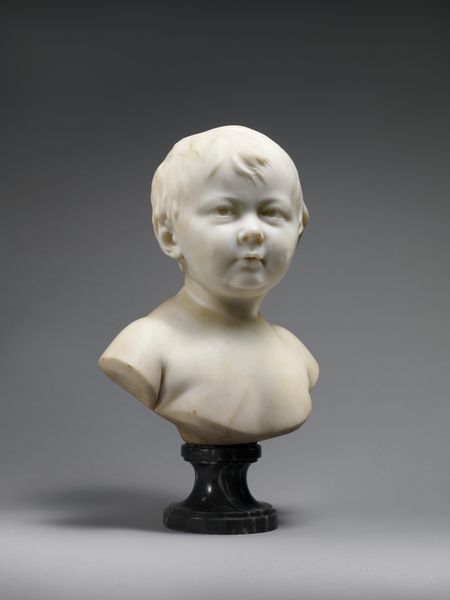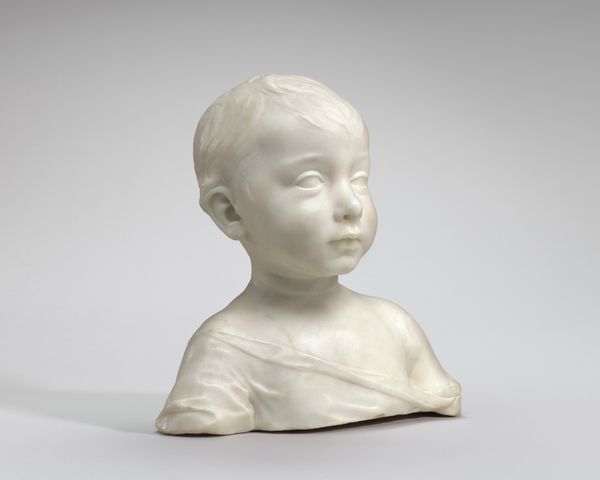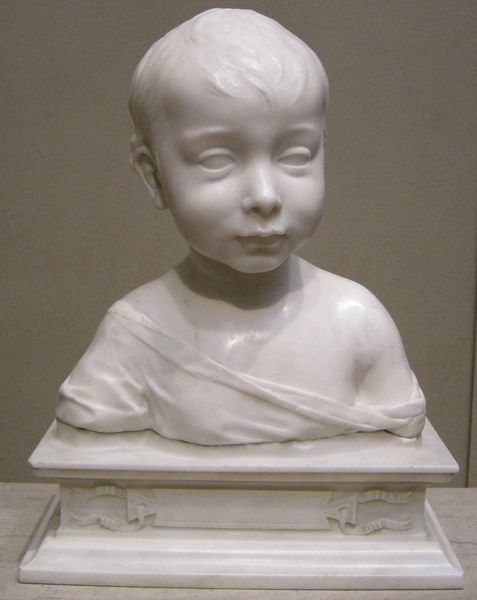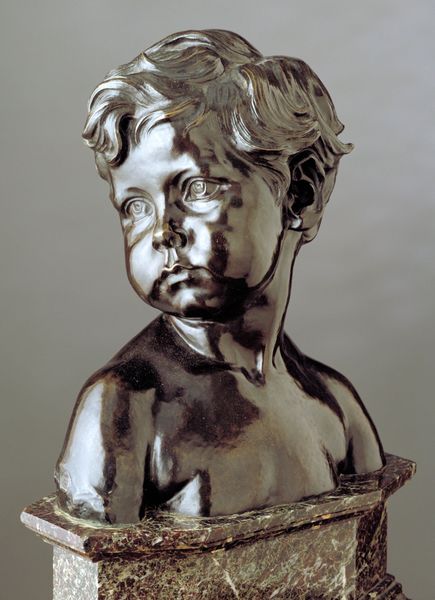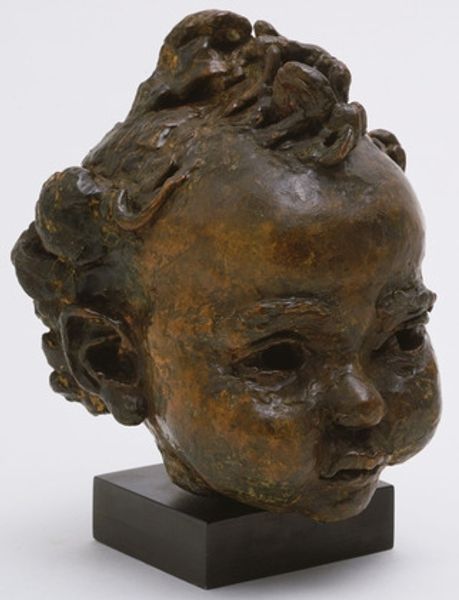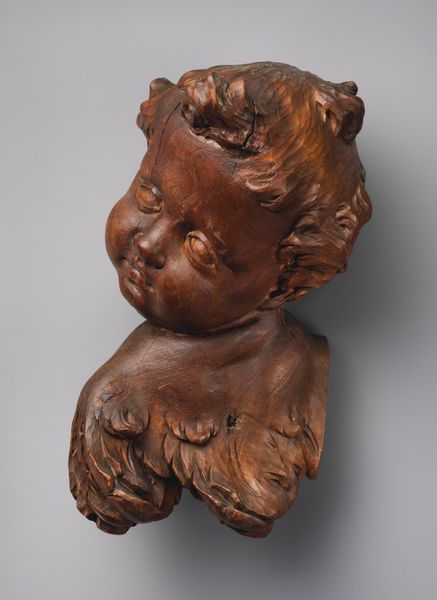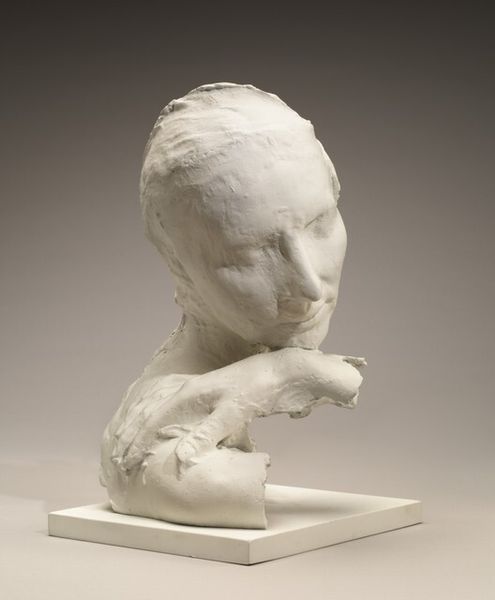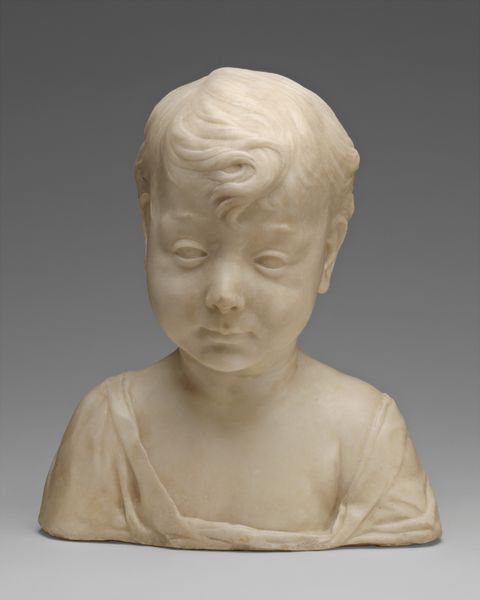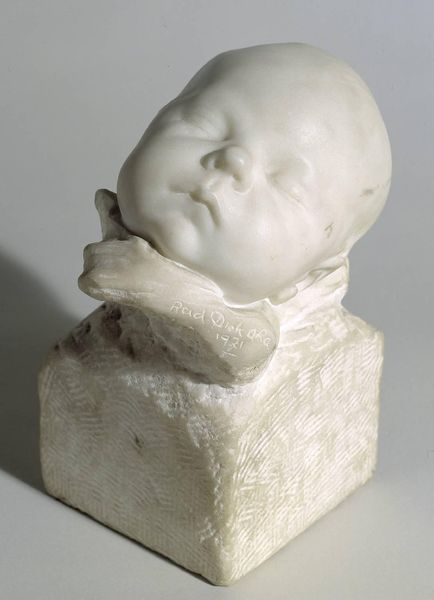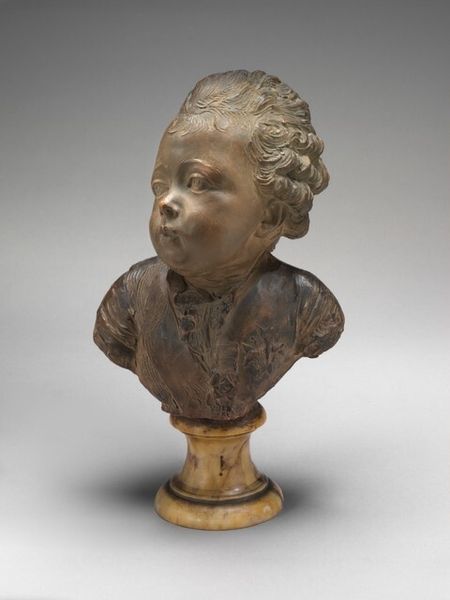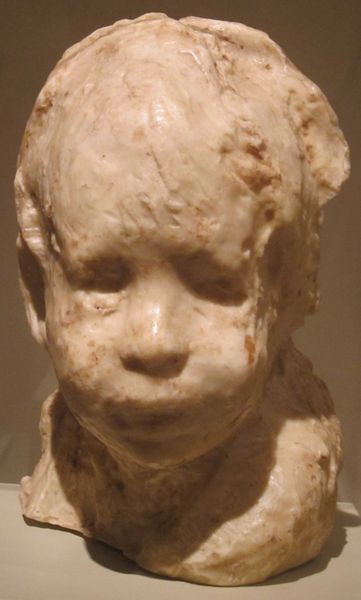
Dimensions: object: 343 x 216 x 133 mm, 6 kg
Copyright: © Estate of Sir Charles Wheeler | CC-BY-NC-ND 4.0 DEED, Photo: Tate
Curator: This is Sir Charles Wheeler's bronze sculpture, "The Infant Christ," housed here at the Tate. Editor: My first thought? Melancholy. It’s striking how the downward gaze imbues this small figure with such a profound sense of contemplation. Curator: Absolutely. Wheeler, who lived from 1892 to 1974, was deeply immersed in religious and historical themes. This piece, while seemingly traditional, invites us to consider the burden placed upon this child. Editor: The halo, almost industrial in its simplicity, contrasts beautifully with the soft, fleshy rendering of the infant. It’s like the weight of destiny, literally encircling his head. Curator: And that very contrast challenges the conventional glorification of the Christ child, doesn't it? It humanizes him, acknowledges the social and existential weight he carries within religious doctrine. Editor: It does. I am left wondering what this little Christ-figure would dream about. Curator: A heavy weight indeed. Editor: Precisely!
Comments
tate 7 months ago
⋮
http://www.tate.org.uk/art/artworks/wheeler-the-infant-christ-n03959
Join the conversation
Join millions of artists and users on Artera today and experience the ultimate creative platform.
tate 7 months ago
⋮
Wheeler originally made this as a portrait of his nine-month-old son Robin in early 1920. When it was shown at the Royal Academy four years later he added the halo, transforming it from a naturalistic study into a religious subject. Christ’s down-turned eyes seem lost in thought, as if ruminating on the hard road he must follow. Wheeler, who was President of the Royal Academy from 1956 to 1966, was best known for his monumental public sculptures, including figures on the façade of the Bank of England, and the Jellicoe Memorial Fountain in Trafalgar Square. Charles Wheeler was born in 1892 in Codsall, Staffordshire. He died in Mayfield, Sussex in 1974. Gallery label, August 2004
